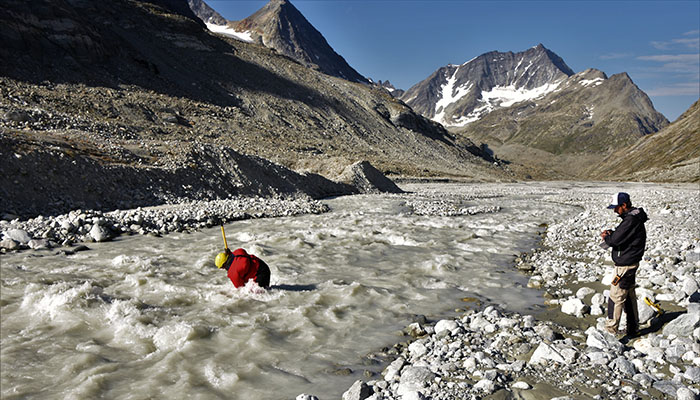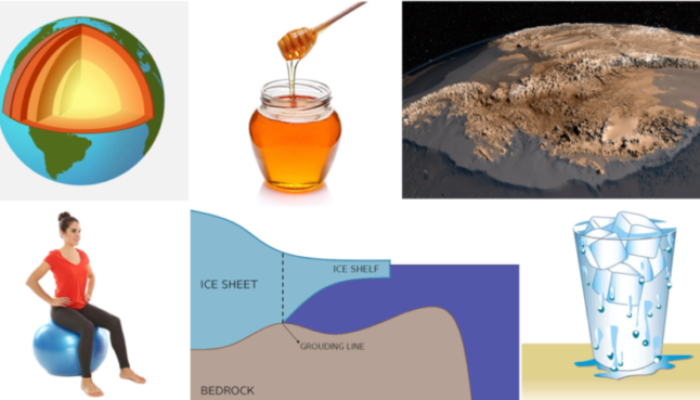This is a joint post, published together with the hydrological sciences division blog, the cryospheric sciences division blog, the geomorphology division blog, given the interdisciplinarity of the topic. – Floreana Miesen and Prof. Dr. Stuart Lane, University of Lausanne – In Switzerland, nothing is really remote, but some places are more so than others. Dense infrastructure networks t ...[Read More]
Geodynamics
Geoscience in the third world
In this week’s wit and wisdom, Jyotirmoy Paul, a PhD student at the Indian Institute of Science, analyses the outlook of geoscience from the third world’s perspective. Academia has been shaped and influenced by the course of world history. The third world concept was seeded in Brussels, 1927, in a gathering of the League Against Imperialism1 and became popular in the mid-1950s through variou ...[Read More]
Hydrological Sciences
Running a live stream of proglacial processes
In Switzerland, nothing is really remote, but some places are more so than others. Dense infrastructure networks typically provide convenient access to research sites in the Alps where it is difficult to feel far away from home. However, this is not always the case… For us, our home for the summer is a bit different. We work at 2400 m above sea level in Southern Switzerland, in a narrow vall ...[Read More]
Seismology
Seismology throughout the years: from blown pre-amplifiers to the internet of things — a technician’s view on seismology
An interview with Arie van Wettum In many universities, students and staff will go out into the field to deploy seismometers, collect data, and service instruments. Students get a sense of the area their data is coming from, the difficulties that are involved with deploying and recording data, and although inexperienced at the beginning, they are a relatively low-cost way of getting equipment out. ...[Read More]
Stratigraphy, Sedimentology and Palaeontology
When huge masses of salt move underground: lessons from outcrops that go beyond the table salt
There is a place in the NE of Mexico where anyone can learn heaps about the dynamics of the ground beneath our feet while enjoying the wonders of the desert. Geologists call the area ‘La Popa Basin’. La Popa means “The Bow”, a name that comes from the shape of one of the mountains in this area, which resembles the front part of a very large boat. This place is a perfect training field for ge ...[Read More]
Geodynamics
The Sassy Scientist – Mi Outcrop Es Su Casa
Stuck at home, Roger keeps alive the hope of returning to fieldwork. Obviously, he wants my thoughts on: What are your top tips for planning fieldwork during a pandemic? Dear Roger, I see you started the long and costly process of planning remote fieldwork, only to have it cancelled by a pandemic. Given the huge uncertainties you have two big options ahead of you (and no middle group of course, be ...[Read More]
Cryospheric Sciences
How do the ups and downs of the solid Earth influence the future of the West Antarctic ice sheet?
When the Antarctic ice sheet loses mass, the pressure it exerts on the underlying solid Earth decreases. As the ice sheet becomes less heavy, the Earth’s surface is not pressed down as much as before and therefore slowly rises up. In some regions, this rebound process is much faster than previously thought and could stabilise areas of unstable ice retreat. How come? Keep reading to figure it out… ...[Read More]
Geodynamics
What can we learn from geodynamic failure?
In this week’s post, Mohamed Gouiza discusses the challenges of living under constant stress, paralysed by the possibility of failure and self-perceived inevitability of impending breakup. Continental rifting, of course! Oh… did you think I was talking about life as a researcher? Under tensile stress, the lithosphere stretches, the asthenosphere rises, the crust fails, and rifts form. During this ...[Read More]
Hydrological Sciences
Featured catchment: Water Towers of Mesopotamia: Snow feeding the cultural heritage
Importance and challenges of snow modelling in Turkey Snow and glaciers in the high mountains play a crucial role for 1.6 billion people living downstream of mountainous areas. Thus, understanding snow dynamics is crucial for downstream irrigation, hydropower, flood control etc. In eastern Anatolia, Turkey (the mean elevation is around 1140 m), much of the precipitation falls as snow and is retain ...[Read More]
Tectonics and Structural Geology
Chi Jishang (1917-1994): the diamond hunter who shaped her own future
Chi Jishang was born on the 25th of June 1917 in the Anlu County in the Province of Hubei, central China, but she moved to Beijing when she was four years old. Because her family was poor and she had three older siblings, her parents did not allow her and her younger sibling to go to school at the age that they should go to school. As a child, Chi was bright and very curious. She would ask her sch ...[Read More]










